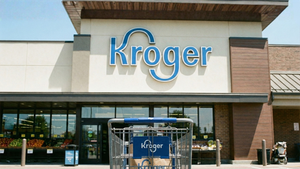
Apple (NASDAQ: AAPL), the global technology behemoth, finds itself at a pivotal juncture, simultaneously fending off regulatory challenges, adapting to persistent geopolitical trade tensions, and strategically forging new alliances in the burgeoning fintech landscape. A recent federal court ruling concerning Google (NASDAQ: GOOGL)'s antitrust case, the looming specter of increased tariffs, and an expanded partnership with Klarna are collectively shaping the Cupertino giant's operational strategies and future market positioning. These developments underscore a period of intense external pressure and dynamic adaptation for one of the world's most valuable companies.
The interplay of these forces highlights a complex environment where legal precedents, international trade policies, and innovative collaborations dictate the pace of technological evolution and market competition. How Apple responds to these multifaceted challenges will not only define its trajectory in the coming years but also send ripple effects across the entire technology sector and global supply chains.
A Legal Lifeline, Persistent Tariff Threats, and a Fintech Pivot Define Apple's Horizon
The early days of September 2025 delivered a mix of relief and renewed pressure for Apple. In a closely watched federal antitrust case brought by the U.S. Department of Justice (DOJ) against Google, a significant ruling upheld the lucrative search agreement between Google and Apple. This partnership, which reportedly injects an estimated $20 billion annually into Apple's coffers for making Google the default search engine on its Safari browser, was a prime target for the DOJ. Apple's Senior Vice President of Services, Eddy Cue, played a crucial role in the outcome, testifying to Google's superior search quality and privacy protections, arguments that reportedly swayed the court. This decision, issued by Judge Amit Mehta, preserves a vital revenue stream for Apple and potentially paves the way for deeper AI integrations, such as leveraging Google's Gemini within the Apple ecosystem.
However, the ruling was not without its nuances. While the core agreement stands, the court prohibited exclusive contracts, meaning Google can no longer mandate its search engine as the sole default. This legal distinction could empower Apple to negotiate with other search providers, including emerging AI search companies, potentially increasing its leverage and allowing for more diverse or rotating default options. Furthermore, Google is now mandated to share portions of its search index and some user interaction data with "qualified competitors" on commercial terms, a remedy following an August 2024 ruling that found Google had illegally maintained an online search engine monopoly.
Simultaneously, Apple continues to grapple with the evolving landscape of US-China tariff threats. CEO Tim Cook recently disclosed an estimated US$1.1 billion in tariff-related costs for the September quarter alone, a notable increase from the $800 million incurred in the prior quarter. In response to these persistent geopolitical tensions, Apple has accelerated its manufacturing diversification strategy. The company has significantly ramped up iPhone assembly in India, exporting nearly 3 million iPhones from India to the U.S. in April 2025—a 76% year-on-year increase—with ambitions to produce 15-20% of its global output in India by year-end. Production of other key products like iPads, Macs, Apple Watches, and AirPods has also shifted to Vietnam. Yet, China remains critical, with approximately 90% of Apple's products still assembled there, and many advanced components exclusively sourced from Chinese manufacturers. Despite rising input costs, Apple opted to maintain prices for its newly unveiled iPhone 17 lineup, AirPods Pro, and updated Apple Watch models in September 2025, a decision aimed at preserving competitive positioning but potentially squeezing profit margins.
Adding to its strategic maneuvers, Apple significantly expanded its partnership with Klarna, a leading "buy now, pay later" (BNPL) provider. Effective September 15, 2025, Klarna's flexible payment options are now available for in-store purchases on iPhones in the U.S. and UK, building on a previous collaboration for online and in-app Apple Pay (NASDAQ: AAPL) transactions from October 2024. This integration allows eligible Apple Pay users to access Klarna's "Pay in 4" (U.S.) or "Pay in 3" (UK) interest-free installments, "Pay Later" for a 30-day deferral, or "Financing" for larger purchases directly at physical checkouts. This move effectively replaces Apple's own short-lived "Apple Pay Later" service, signaling a strategic shift towards leveraging established third-party financial providers rather than developing in-house BNPL solutions. This expansion not only enhances consumer flexibility but also strengthens Klarna's (a private company that recently completed a US IPO, raising $1.37 billion) position in the BNPL market, solidifying both companies' roles in the forefront of digital payments.
A Shifting Fortunes: Who Wins and Loses in Apple's Dynamic Landscape
The recent flurry of developments creates a complex tableau of winners and losers, with significant implications for Apple (NASDAQ: AAPL) and its ecosystem.
Apple (NASDAQ: AAPL) emerges as a nuanced winner in the short term regarding the Google (NASDAQ: GOOGL) antitrust ruling. The preservation of its multi-billion-dollar search agreement with Google is a substantial victory, securing a critical revenue stream and enabling potential deeper AI collaborations. The strategic pivot away from its proprietary "Apple Pay Later" to partnering with Klarna demonstrates agility, offloading the complexities of credit provision while enhancing its Apple Pay platform's utility and reach. However, Apple faces considerable headwinds from ongoing tariff threats. The estimated $1.1 billion in tariff costs and potential future duties, such as President Trump's proposed 25% tariff on all non-US-made Apple products, will pressure profit margins if the company continues to absorb these expenses to maintain competitive pricing, particularly in key growth markets like India and China. While supply chain diversification to India and Vietnam offers long-term resilience, the transition itself is costly and complex, and China's continued dominance in component manufacturing remains a vulnerability.
Google (NASDAQ: GOOGL), the defendant in the DOJ antitrust case, also sees a significant win. The court's decision to uphold the core search agreement with Apple prevents more aggressive remedies like a breakup or forced divestiture of Chrome or Android. This preserves its market dominance in search and its lucrative financial relationship with Apple. However, Google is not entirely unscathed. The prohibition of exclusive contracts means its strategy for maintaining default search status might need adjustment, opening avenues for competitors. Furthermore, the mandate to share parts of its search index and user interaction data with "qualified competitors" could, over time, foster a more competitive search landscape. Google also faces an ongoing remedies trial in late September 2025 related to its advertising technology business, after being found to have illegally monopolized ad-tech markets, suggesting continued regulatory scrutiny.
Klarna stands out as a clear winner from its expanded partnership with Apple Pay. This deep integration into Apple's ecosystem provides a massive boost to its market presence, credibility, and reach, particularly in the critical U.S. and UK markets. The ability to offer its BNPL services seamlessly at physical checkouts through Apple Pay significantly enhances its competitive advantage against other BNPL providers and traditional payment solutions. This partnership, coupled with its successful US IPO, solidifies Klarna's position as a leader in the rapidly growing fintech space.
Competitors in the Search and BNPL Markets face mixed outcomes. For other search providers, particularly those looking to challenge Google's dominance, the ruling's mandate for Google to share parts of its search index offers a glimmer of opportunity, although overcoming Google's entrenched position will remain an uphill battle. In the BNPL sector, the Klarna-Apple Pay alliance creates a formidable force, potentially putting pressure on competitors like Affirm, PayPal (NASDAQ: PYPL) (with its Pay in 4), and Square (NYSE: SQ) (with Afterpay) to enhance their own integrations and offerings to remain competitive. Traditional financial institutions and credit card companies may also feel increased pressure as BNPL options become more ubiquitous and seamlessly integrated into digital wallets.
Industry Shifts and Broader Implications
These developments around Apple (NASDAQ: AAPL) resonate far beyond the immediate financial statements of the involved companies, signaling broader shifts across industries. The Department of Justice's antitrust ruling against Google (NASDAQ: GOOGL), while not breaking up the tech giant, sets a significant precedent for how regulatory bodies will approach platform dominance. The focus on prohibiting exclusive contracts rather than dismantling core businesses indicates a nuanced regulatory approach that seeks to foster competition by opening up ecosystems, rather than outright breaking up dominant players. This could have ripple effects, influencing future antitrust investigations into other tech giants regarding their app stores, payment systems, and content distribution agreements, potentially forcing them to relax exclusivity clauses and allow greater interoperability or third-party access.
The ongoing tariff threats and Apple's aggressive supply chain diversification underscore a fundamental re-evaluation of globalization. The era of frictionless global manufacturing, optimized solely for cost efficiency, is giving way to a more complex calculus that incorporates geopolitical risk, national security concerns, and resilient supply chains. This shift is not unique to Apple; it is a trend across the electronics and other manufacturing-heavy industries. Companies are increasingly exploring "China+1" or "China+N" strategies, leading to investments in countries like India, Vietnam, Mexico, and other emerging manufacturing hubs. This dispersal, while mitigating single-point-of-failure risks, also introduces new complexities, higher initial capital expenditures, and potential inefficiencies, which may eventually translate into higher consumer prices or reduced corporate margins across the tech sector.
Furthermore, the Klarna-Apple Pay partnership is a potent indicator of the evolving landscape of fintech and embedded finance. Apple's decision to discontinue its "Apple Pay Later" and instead integrate with a third-party BNPL provider highlights a strategic recognition that specializing in platform ownership and user experience, while partnering for complex financial services, can be more effective. This trend suggests that traditional banks and financial institutions will increasingly need to collaborate with, or acquire, agile fintech players to remain relevant in the digital payments space. It also solidifies the BNPL model as a mainstream payment option, further blurring the lines between credit, debit, and installment financing, which will likely influence consumer spending habits and personal finance management across various demographics. The robust integration of BNPL into widely adopted digital wallets like Apple Pay will accelerate its adoption and could force regulatory bodies to consider more comprehensive oversight for these increasingly popular payment methods.
The Road Ahead: Navigating Growth and Geopolitics
Looking ahead, the convergence of these factors portends a dynamic and challenging environment for Apple (NASDAQ: AAPL) and the broader tech industry. In the short term, Apple will be closely watched for how it manages the escalating tariff costs. Its decision to absorb these expenses for the iPhone 17 line suggests a commitment to market share and customer loyalty, but this strategy is unsustainable indefinitely. Investors will be keen to see if future product cycles reflect price adjustments or if Apple can offset these costs through increased efficiency, higher-margin services, or a more aggressive supply chain diversification that truly shifts the cost burden. The success of its manufacturing hubs in India and Vietnam will be critical in the coming months, as will the efficiency of scaling up production outside of China.
Longer term, Apple's strategic pivots will define its future. The Google (NASDAQ: GOOGL) antitrust ruling, while favorable, has opened the door to non-exclusive search agreements. This could lead Apple to explore partnerships with alternative search engines or invest in its own AI-powered search capabilities, potentially reshaping its service revenue mix. The Klarna partnership signals a broader strategy of leveraging its platform power to integrate best-in-class third-party services, rather than attempting to build every solution in-house. This collaborative approach could extend to other areas, transforming Apple's ecosystem into a more open, yet curated, hub for digital services.
Market opportunities will emerge from these shifts. For instance, the demand for resilient, diversified supply chains will create opportunities for contract manufacturers and logistics providers in new regions. The increasing mainstream acceptance of BNPL, driven by the Apple-Klarna alliance, will spur innovation and competition in the fintech space. However, significant challenges remain, particularly from the unpredictable nature of geopolitical trade relations and the persistent scrutiny from antitrust regulators globally. Further regulatory actions against tech giants, especially following Google's ad-tech remedies trial, could redefine acceptable competitive practices and reshape digital markets.
Conclusion: Apple's Adaptive Resilience in a Turbulent Era
In summary, Apple (NASDAQ: AAPL) is navigating a period defined by significant external forces that demand strategic flexibility and robust adaptation. The favorable aspect of the Google (NASDAQ: GOOGL) antitrust ruling secures a critical revenue stream while simultaneously nudging Apple towards potentially exploring a more diversified search strategy. Concurrently, the increasing pressure from tariff threats is accelerating a costly but necessary overhaul of its global manufacturing footprint, signaling a broader industry trend towards supply chain resilience over pure cost optimization. Lastly, the expanded partnership with Klarna marks a pragmatic pivot in its fintech strategy, leveraging established third-party expertise to enhance Apple Pay (NASDAQ: AAPL) and solidify its position in the rapidly growing digital payments sector.
Moving forward, Apple's ability to balance these competing pressures will be paramount. The company's resilience, demonstrated through its consistent innovation and adaptive supply chain management, will be tested against geopolitical uncertainties and evolving regulatory frameworks. Investors should closely monitor several key indicators: the actual financial impact of tariffs on Apple's gross margins, the successful scaling and efficiency of its diversified manufacturing operations outside of China, and the continued growth and integration success of its strategic partnerships like Klarna. The broader tech market will also be watching for further antitrust actions against major platforms and the continued evolution of global trade policies, which will collectively shape the operational landscape for all multinational technology companies in the months and years to come. These developments underscore that even for a company of Apple's stature, constant vigilance and strategic agility are essential for sustained success in an ever-changing global economy.





